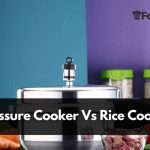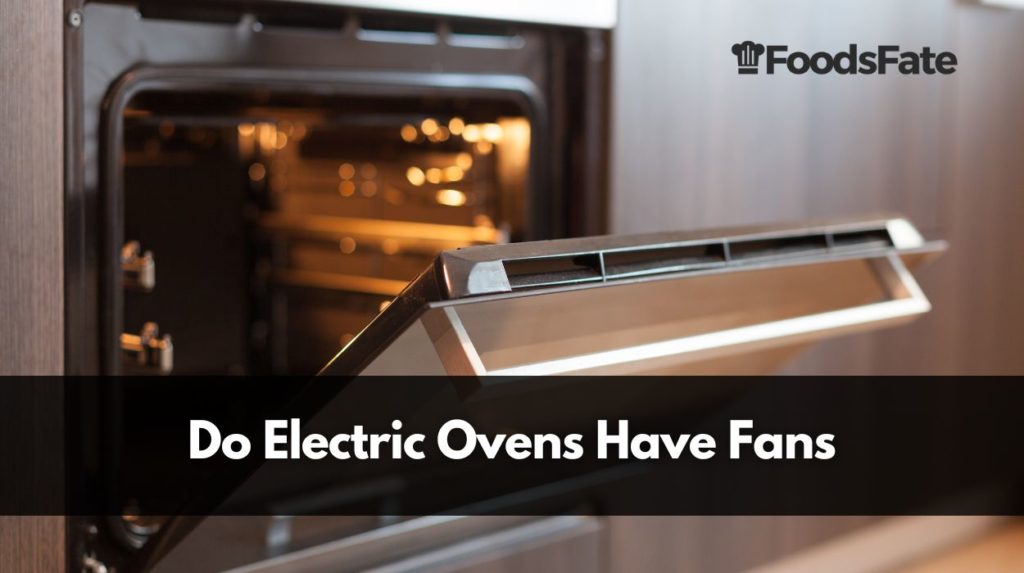
A key kitchen item, the oven has a market value of $5.43 billion in the United States. Since most of us use these ovens, there are endless variations in their style and design to suit everyone’s needs. So, it may be unclear to understand the types of oven and their parts.
An electric oven has a heating element that functions with electricity. The method via which this heat is distributed may vary. The oven will be called a convection oven if it has a fan.
This article will discuss the types of ovens and their heating principle. We will also discuss which style of oven best suits your needs.
Do All Ovens Have Fans?
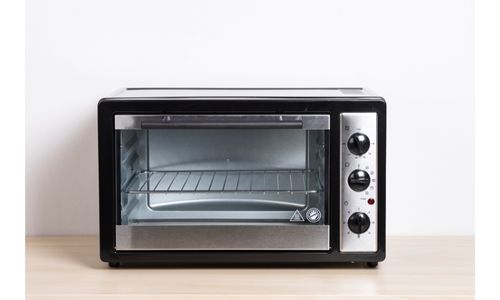
No, not all ovens have a fan. Ovens can be roughly categorized as either conventional ovens or fan-forced ovens. Conventional ovens work on the heat produced by the heating element, whereas a fan-based oven has a fan that helps circulate the air throughout the oven.
Conventional ovens can be gas-based or electrical. In the former, the heating element is a gas flame, whereas, in the latter, the heating element is electrical coils.
Fan-based ovens can either be gas or electrical. However, they are always equipped with a fan that can help transfer heat throughout the oven via the process of convection.
Naturally, an oven with a fan can help cook food faster and heats the oven uniformly since it constantly circulates the heated air in the oven.
Why Do Ovens Have Fans?
The main reason why fans are used in ovens is to ensure that the entire heating process is quicker and more consistent. In an oven without a fan, there are chances that the food may have cold and warm spots since the heat is not circulated systematically.
Convection ovens have a fan in front of the heating element to efficiently circulate the heat throughout the space to cook the food from the inside out without any cold spots.
Fan ovens are often coupled with other features to provide the best of both worlds that can ease the entire process of cooking. Some fan ovens are clubbed with the grilling feature, ideal for making sausages and burger patties.
Furthermore, since fans can help circulate hot air for cooking or heating, the temperature required during the process is relatively lower than a regular non-fan oven.
Fan-Assisted Ovens
In fan-assisted ovens, the fan is located in the back of the oven, while the heating elements are located at the top or bottom. The design helps to facilitate the convection of the heat generated by the heating element.
However, because the fan and the heating elements are situated separately, each can be used independently. For instance, you can switch off the fan to prepare biscuits and cookies. It will turn the oven into a typical one, where food is baked at high temperatures to give it the appropriate crisp.
Fan-Assisted ovens have the flexibility to heat with the help of a fan element or go conventional without the fan.
Fan Ovens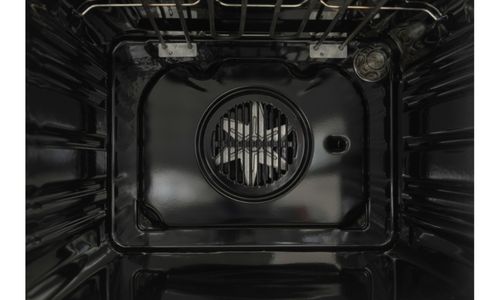
A fan oven has a fan in the back inside the chamber. The heating element is behind the fan to ensure that hot air is pumped and continuously pushed inside the chamber.
The food gets cooked thoroughly and evenly as the heated air is spun continuously by the fan. In such ovens, you do not have the liberty to turn the fan off.
Hence, if you want to cook a heavy meal like chicken or turkey, these can help maintain a consistent temperature and warmth inside the inner chamber to cook the meal properly without leaving any raw or uncooked parts. Hence, these are ovens that are perfect for roasting.
How do I know if my oven is a fan oven?
Fan-based ovens are more common nowadays due to their flexibility and ease. In a conventional oven, the heating element is either on the top or bottom; hence, when the oven is turned on, the area around the heating element gets hot to the touch.
In a convection oven with a fan, a fan is present in the inside chamber. Hence when you open the door, you can see the grills behind which the fan is present.
If there is a fan in the oven, a symbol with three blades that resemble fans is plastered on the exterior. The symbol will be encased in a circle or square if the oven is fan-forced. If you can only spot the symbol, it indicates that the oven is a fan-assisted style.
When you turn a fan-based oven on, you can hear the whirring noise produced when a fan spins. Hence, it is audible whether the fan is turned on or off.
Furthermore, if an oven has a fan, it is mentioned in the manual.
When to use a fan in the oven
Using a fan in an oven can help cook food faster without wasting too much energy. However, not all recipes can work well with a fan-based oven; some ingredients work best when cooked in a static oven.
In a static oven, the heat released from the heating element helps cook the food. In a fan-based oven, the heat is circulated with the help of a fan; hence, the relatively dry heat is present in the inside chamber.
Some recipes, like rusks, biscuits, cakes, cookies, custards, etc., require a moderately warm heat that can give the item a soft and chewy texture. So it is ideal if you are cooking something that needs to rise!
However, some recipes, like meats, fish, vegetables, baked pasta, etc., require traditional brown crust and juicy insides. For this dual texture, the heat required is dry and uniform. Hence, a fan-based oven can be the best bet!
How to use a fan in the oven
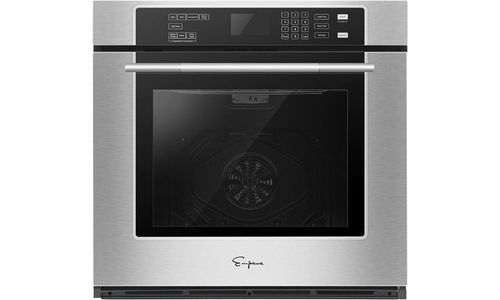
When baking, it is very important to learn tips and tricks to help make the most out of the oven.
- If it is a fan-based oven, the temperature required will be lower than a conventional oven setup. Hence, if you use a temperature of 350 degrees Fahrenheit in a static oven, you can cook at a temperature of 300 degrees Fahrenheit in a fan oven.
- In a fan oven, the heat is distributed throughout. However, it is best to cook food on the middle shelf. It is the best spot in the oven where heat is received from all sides.
- Preheating is not necessary with a fan oven because the fan controls the temperature since it generates the hot heat. In an oven with a fan, the elements must be warm before the fan can propel the hot air.
What Are the Differences Between Conventional Ovens and Fan Ovens?
The main difference between the two types of the oven is the principle of heat distribution. In a fan oven, a fan helps propel the heat generated from the heating elements. A conventional oven has no fan; heat only radiates from the heating element.
A fan-based oven cooks food faster since it facilitates equal and quick heat distribution. Since the fan helps achieve a relatively faster stable temperature, the time required to cook meals is also less.
A conventional oven takes time to cook meals because there is nothing to assist in distributing the heat. Often, the food cooked may have cold pockets due to lack of heat dispersion.
Since the time required to cook food is less in a fan oven, it saves energy and reduces electricity consumption.
When Should You Use a Conventional Oven vs. a Convection Oven?
Choosing the right oven for your kitchen can be very difficult. The response may vary depending on your needs since they all serve distinct culinary purposes.
If You Do a Lot of Baking
If you are looking for an oven to help you achieve your baking goals, a conventional oven can be your buddy! Baked goods require moist heat to get that soft and spongy texture. Since fan ovens produce dry heat, the cakes and cookies can become very hard and dry.
In addition, baking requires constant, low heat. It is simple to fulfill both of these requirements with a standard oven.
If You Mostly Cook
Cooking requires evenly distributed heat to ensure the meal is well done. If you want an oven that can help you prepare intricate recipes with turkey, poultry, pork, meat, etc., a fan-based oven can make your work 100 times easier.
Dry heat is applied, which helps to evaporate extra moisture from the meal. It can be helpful when cooking the foods mentioned above since moisture might muddle the flavor and taste.
Can you add a fan to an oven?
You cannot add a fan physically if the oven is conventional because the temperature inside will be very hot. However, I can share a method if you want the final product to give you the feel and taste of a conventional oven.
Step 1: Preheat the oven to the required temperature.
Step 2: Place the oven on the shelf where the heating element is in the closet for half the time required per the recipe. For instance, if the cooking time is 60 minutes, keep it on this shelf for 30 minutes.
Step 3: For the next 30 minutes, place it on the shelf that is the furthest from the heating element. It will ensure the food is cooked thoroughly and uniformly with a ‘roast-like appearance.’
FAQ
Listed below are some commonly asked questions.
FAQ 1: Can I use my oven without the fan?
Answer: Broadlyz speaking, there are two types of convection ovens: fan-based and fan-forced. The fan can be activated and deactivated in the latter per the user’s preferences. So, if the recipe calls for the traditional configuration, you can change the setting and reap both advantages.
FAQ 2: Electric oven vs. Fan oven Temperature
Answer: An electric oven’s heating elements are activated by electricity, and the heat produced gradually fills the interior chamber. The temperature needed to cook the food will be higher than in a fan oven because there isn’t a fan in the chamber to assist with the heat circulation.
FAQ 3: Why is my fan oven making a loud noise?
Answer: If the fan in your oven is making noise, it indicates that the fan is broken. In such cases, you should troubleshoot the issue and check for the nuts and blades before using them again.
Takeaway
Not all electric ovens have fans! If the mode of heat transfer is static, the oven uses the conventional principle of cooking. If a fan helps in dispersing the heat, the method employed is based on convection.
Since convection helps cook food faster at a low temperature, it is preferred over conventional electric ovens. In contrast to fan ovens, fan-assisted ovens offer the option of turning the fan on and off, depending on the cooking type.
I hope you found this article helpful. Let me know in the comment section below if you have any more queries regarding ovens.


